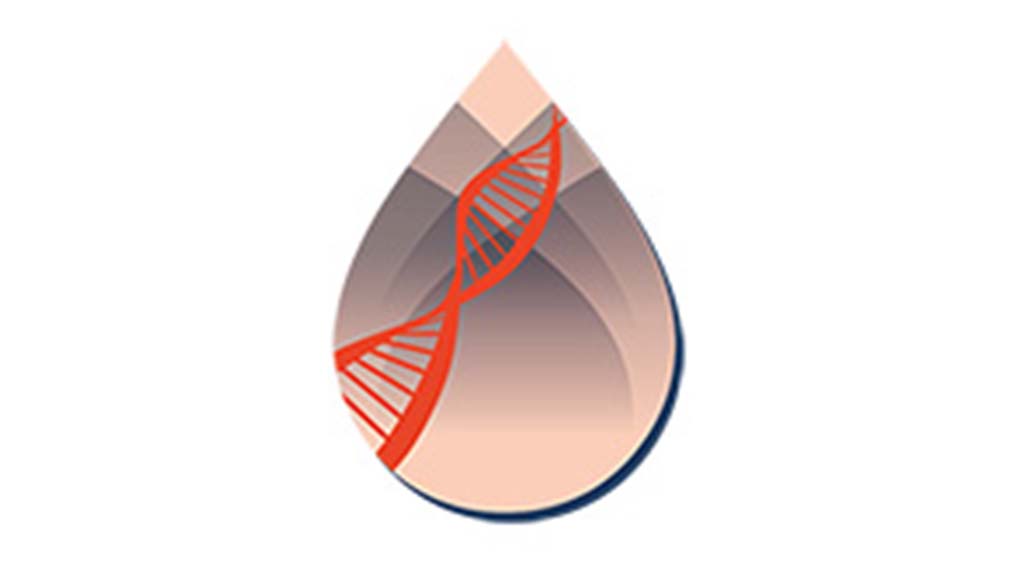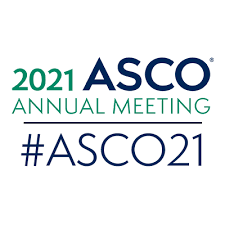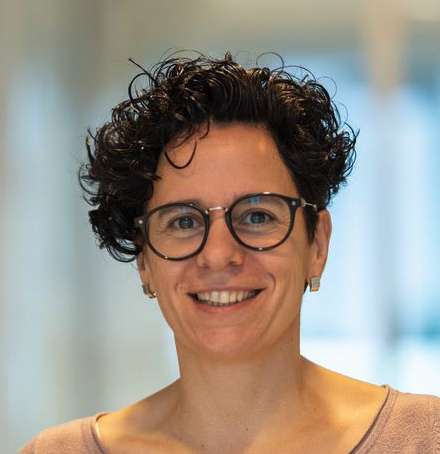Screening for T cells that already fight the tumor: Hartwig’s pipeline in practice

By Laura Nederveen
In the search for more effective cancer treatments, Alena Gros and her team at Vall d’Hebron Institute of Oncology in Barcelona are developing a personalized T-cell therapy. They recently transitioned to Whole Genome Sequencing in collaboration with Hartwig Medical Foundation. “This has had a significant impact on our research, expanding the scope of candidate tumor antigens we screen, potentially identifying more reactive T cells.”
“If we don’t find any reactive T cells, the patient will not get treated,” says Alena Gros, group leader at Vall d’Hebron Institute of Oncology in Barcelona. Gros is investigating a novel approach to cancer treatment, harnessing the body’s own immune cells (T cells) that recognize specific tumor antigens, called neoantigens. In her current clinical trial, neoantigens are identified through a genetic screen, conducted in collaboration with Hartwig Medical Foundation (Hartwig). Using Whole Genome Sequencing and the comprehensive analysis pipeline provided by Hartwig, additional neoantigens (and corresponding T cells) are being identified, which is crucial for patients to receive this innovative treatment. But how does this method exactly function, and how does Gros value the collaboration with Hartwig?
Using Whole Genome Sequencing and the comprehensive analysis pipeline provided by Hartwig, additional neoantigens (and corresponding T cells) are being identified, which is crucial for patients to receive this innovative treatment.
In more conventional ‘CAR’ T cell immunotherapy, cancer-specific T cells are obtained by isolating general T cells from the patient’s blood, engineering them in the lab to target tumor cells, and reintroducing them into the patient. However, this method is predominantly effective for blood cancers such as lymphoma and less so for solid tumors. In the method Gros is using, known as Tumor Infiltrating Leukocyte (TIL) therapy, a specific subset of T cells residing in the tumor microenvironment is extracted and expanded from a solid tumor biopsy.
Recently, an important milestone was reached in TIL therapy, Gros explains: “In February the first TIL therapy was FDA approved, which is the first one-time T-cell therapy approved for a solid cancer.” While the approved therapy extends all TILs, Gros’s approach focuses on enhancing effectiveness by selectively expanding TILs reactive to neoantigens. These neoantigens, stemming from tumor-specific mutations, are identified through tumor cell sequencing. Gros: “We do the sequencing for each patient, so this is highly personalized.”
Initially, Gros outsourced sequencing to a company conducting Whole Exome Sequencing (WES) and handled data analysis internally. However, this posed challenges, as Gros explains: “Our in-house analysis pipeline required frequent updates. Unfortunately, the individual who developed the program was no longer with us, causing some disruptions. Though we managed to troubleshoot, it was very time consuming.”

Until eight months ago. A new colleague joined the institute who happened to be previously affiliated with Hartwig. Connections were forged and a new collaboration was initiated.
“At first, I was skeptical about transitioning to a new analysis pipeline,” Gros recalls, “but the results were very nice and consistent.” With Hartwig, she now performs Whole Genome Sequencing (WGS) and uses their analysis pipeline. Comparing outcomes between their in-house and Hartwig’s software revealed striking similarities: most hits from their internal pipeline were mirrored by Hartwig’s.
Moreover, the shift from WES to WGS brought additional benefits. Detection of viral integrations, determining clonality of variants and status of the antigen presentation machinery, and detection of structural variants, like large insertions and deletions, was now possible. These variants are often too large and complex for short-read next-generation sequencing used in WES. Gros: “This has had a significant impact on our research, expanding the scope of candidate tumor antigens we screen, potentially identifying more reactive T cells.”
Alena Gros:
“Another important advantage of working with Hartwig is the reduced time frame. This is crucial for the patients, as they cannot wait so long for the treatment.”
Another important advantage of working with Hartwig is the reduced time frame. The initial WES sequencing required three to four weeks, whereas WGS with Hartwig is now down to ten or eleven days. “This is crucial for the patients,” Gros emphasizes, “as they cannot wait so long for the treatment.”
Enough reason for Gros to make a transition: “It took us years to develop our pipeline – I’m not exaggerating! – but now we are slowly switching to completely using only the analysis pipeline from Hartwig.”
The collaboration with Hartwig has been very pleasant from the beginning, Gros looks back. “When we had some issues with the data downloading, the people from Hartwig were really thinking along and helped us solve the problem.”
“Of course, whole genome sequencing is more expensive than whole exome sequencing, but if you can afford it, I would definitely recommend collaborating with Hartwig.” says Gros. “The expectation is that these costs will decrease in the future, and for us the shortened turnaround time and the additional structural data were crucial and worth the money.” Moreover, Hartwig’s analysis pipeline is open source and freely available to anyone.
In the clinical trial, Gros collaborates with Dr. Elena Garralda, Director of the Early Drug Development Unit. Gros and her team are responsible for providing the selected T cells, while a medical team is performing the treatment. In practice this means that first a biopsy is taken from the tumor, after which the DNA samples are prepared in Gros’ lab and sent to the Netherlands to be sequenced by Hartwig. The researchers then download and analyze the data and screen for the neoantigen-specific T Cells using the identified (and expressed) sequences as reagents.

Elena Garralda
Gros and her team are responsible for providing the selected T cells, while a medical team is performing the treatment. In practice this means that first a biopsy is taken from the tumor, after which the DNA samples are prepared in Gros’ lab and sent to the Netherlands to be sequenced by Hartwig. The researchers then download and analyze the data and screen for the neoantigen-specific T Cells using the identified (and expressed) sequences as reagents.
“When and if we find reactive T cells, we go back to the manufacturing facility (Blood and Tissue Bank, Barcelona) which has cryopreserved these TILs under sterile conditions,” Gros explains. “We request the facility nearby to thaw and expand specifically those samples that contain neoantigen reactivity. Finally, the acquired T-cell product is handed over to the medical team to treat the patient.”
Alena Gros:
“This retrospective data analysis could improve TIL therapy and contribute to highly personalized and effective immunotherapy for solid tumors.”
“Up till now, about twenty patients have been screened of which only a small fraction has been treated,” says Gros. In this small trial, she aims for ten treated patients as proof of principle.
Besides treating patients with selected TILs, Gros also aims to more fundamentally understand what antigens TILs recognize in cancer patients. This involves identifying specific nonsynonymous mutations (the neoantigens) and other expressed antigens, such as cancer germline and viral antigens, within the tumor of each patient. Additionally, Gros plans to utilize the emerging database of whole genome sequences for multi-patient meta-analysis. “We would like to compare our cohort to other cohorts sequenced by Hartwig.”
The ultimate goal is to identify gene or RNA signatures in baseline tumor samples that predict patient reactivity to neoantigens and other cancer antigens, as well as to determine TIL responsiveness based on these signatures. Gros: “This retrospective data analysis could improve TIL therapy and contribute to highly personalized and effective immunotherapy for solid tumors.”
Alena Gros:
“Without the speed and extensiveness of Hartwig’s WGS, this would not have been possible.”
In the meantime, the clinical trial continues. Currently it is too early to say whether the treatment is working, but it is promising that at least for a couple of patients a selected T-cell product could be prepared, and the patients could be treated. The collaboration with Hartwig was key, according to Gros: “Without the speed and extensiveness of Hartwig’s WGS, this would not have been possible.”
The clinical trial is funded by Instituto de Salud Carlos III and CAIMI-II Program, Fundación BBVA.
You read an article in the category Whole genome sequencing. You may also be interested in Hartwig Medical Database, Hartwig Medical Foundation, IT, Learning healthcare system, Molecular diagnostics, OncoAct, Personalized treatment, Research All newsAlso read

New cancer treatment options created by full DNA-analysis
Nature publication reports study by Netherlands Center for Personalized Cancer Treatment showing benefits for targeted treatments outside registered indications 2 …

ASCO 2021: Presentations about whole genome sequencing
At the congress of the American Society of Clinical Oncology (ASCO) on 4-8 June 2021 researchers Kris Samsom and Luuk …

In the media: Genomeweb: Partial reimbursement for comprehensive DNA test in the Netherlands
This week, Genomeweb’s Precision Oncology News brought the news that the Dutch House of Representatives has recently unanimously decided to …

The number of WGS samples Hartwig Medical Foundation has is quite unique in the research field and is rapidly growing. It amounted to 3.500 samples when we started and it’s already over 5.000 now.